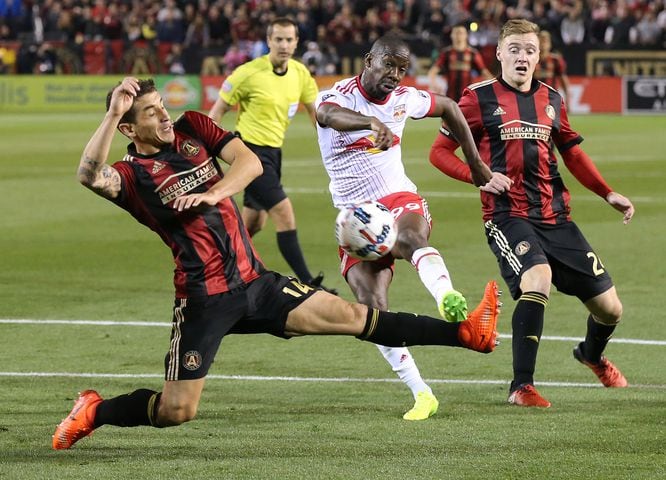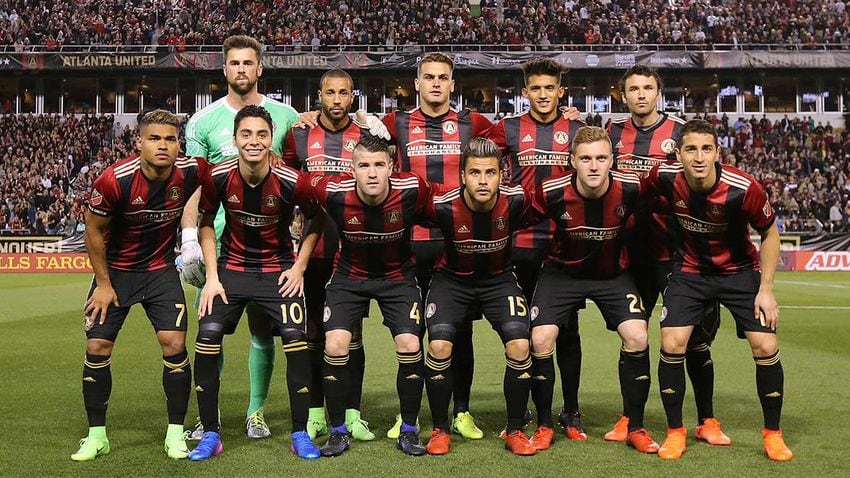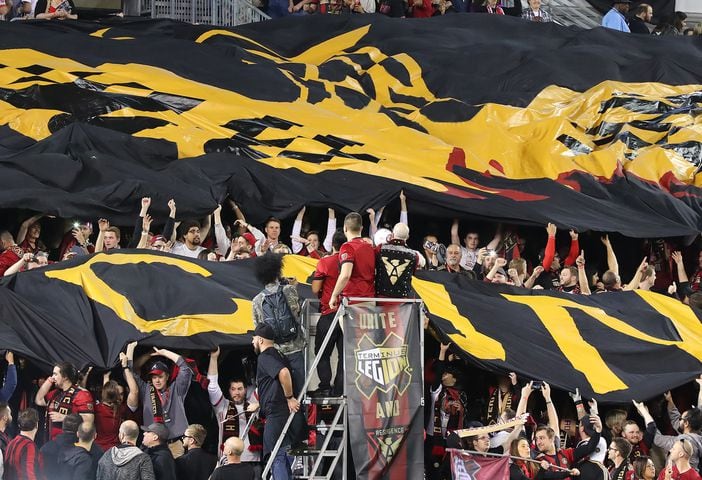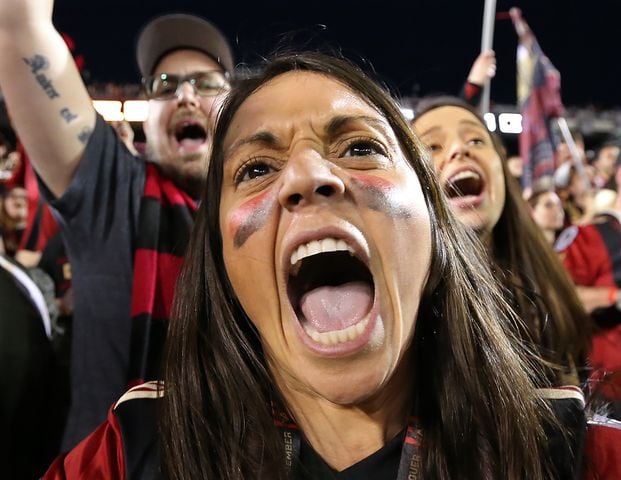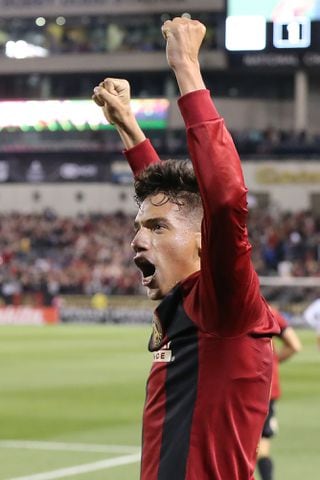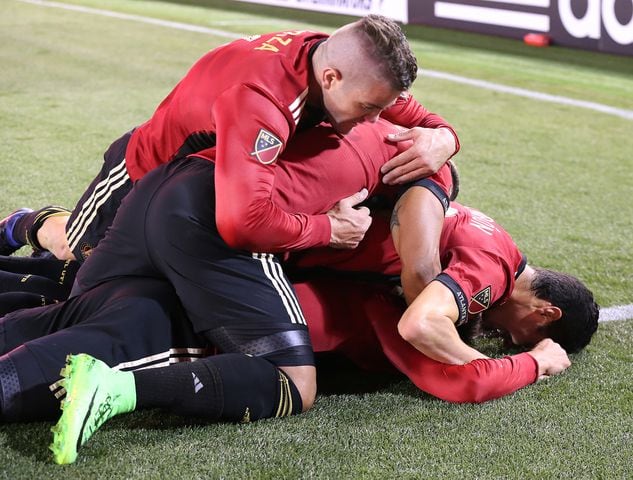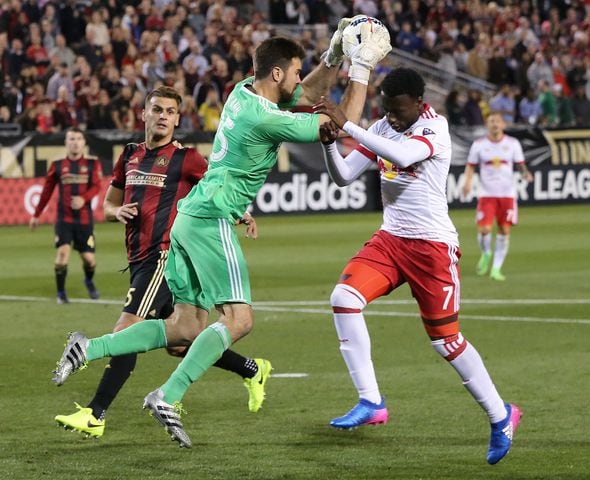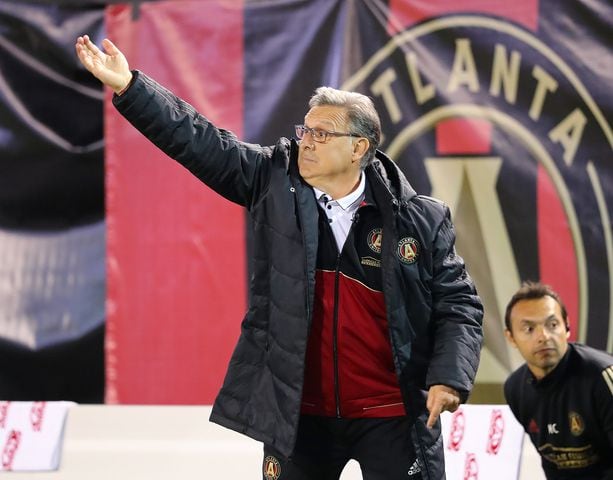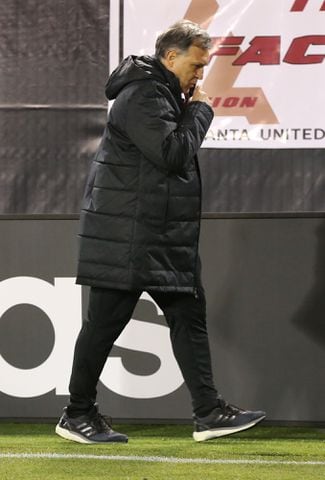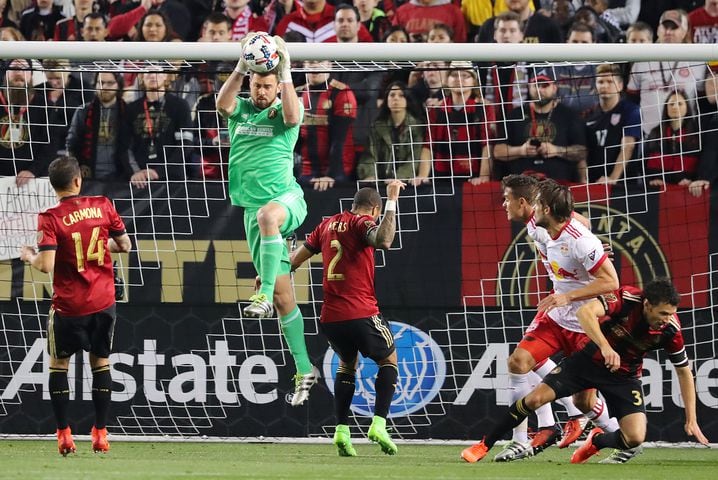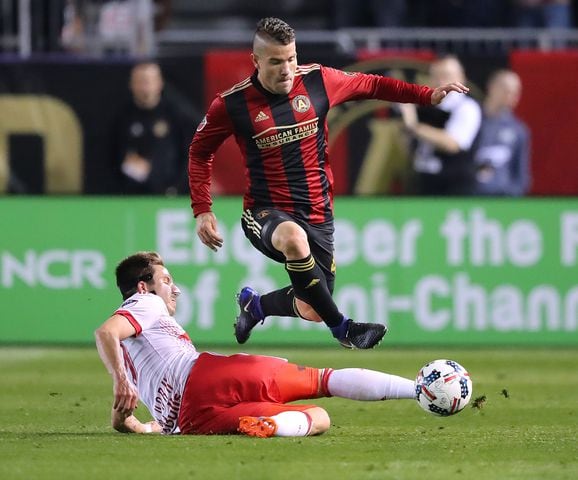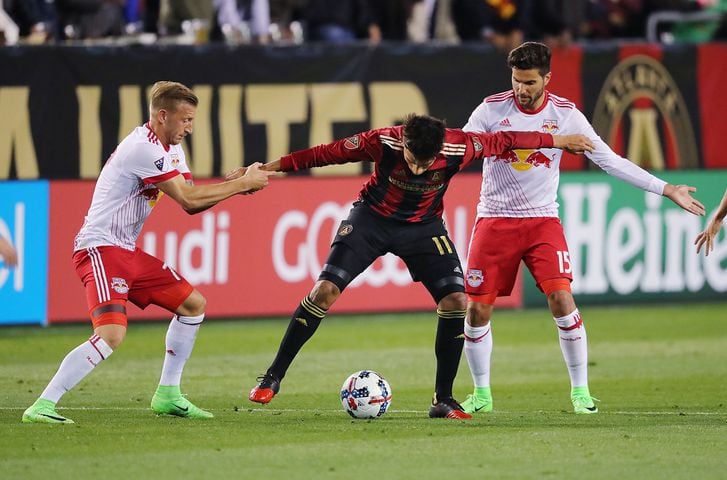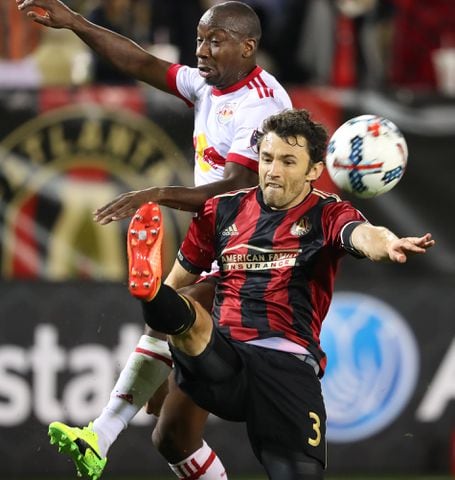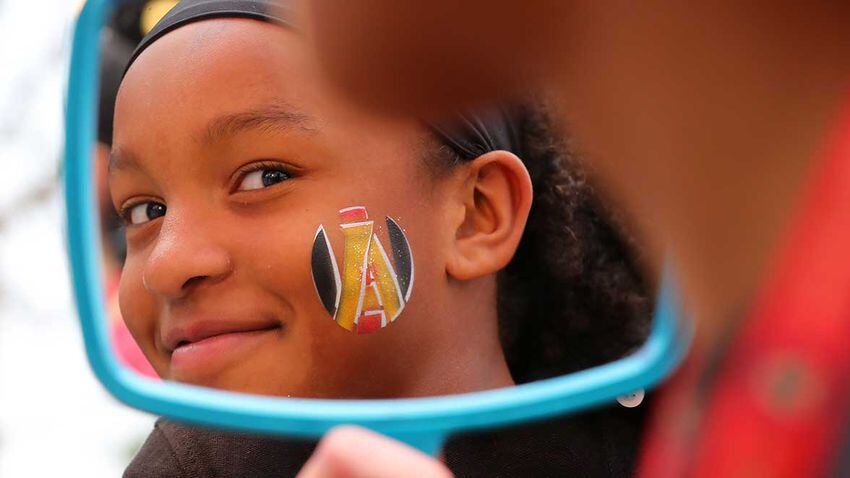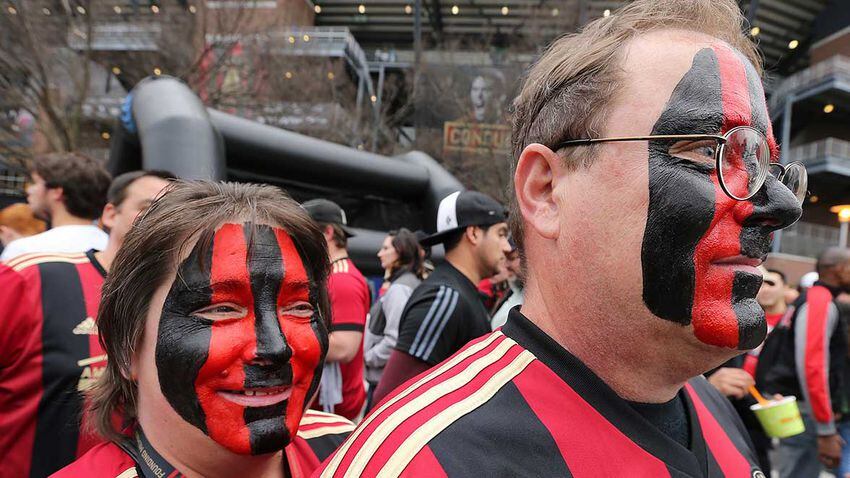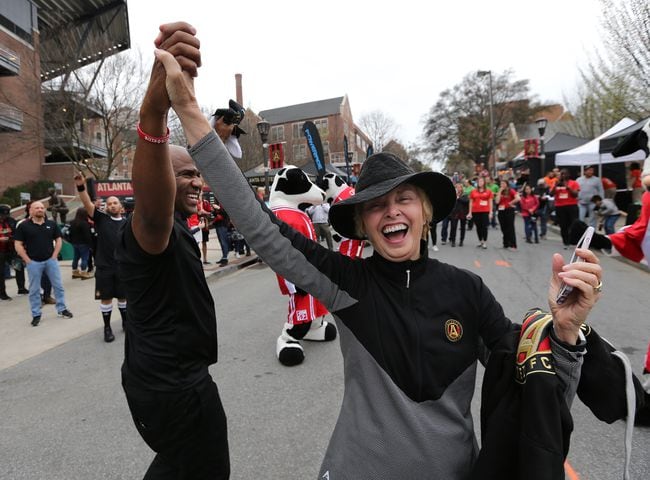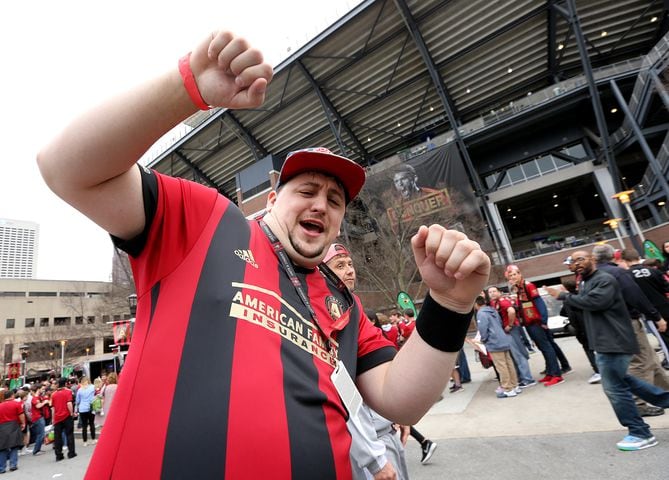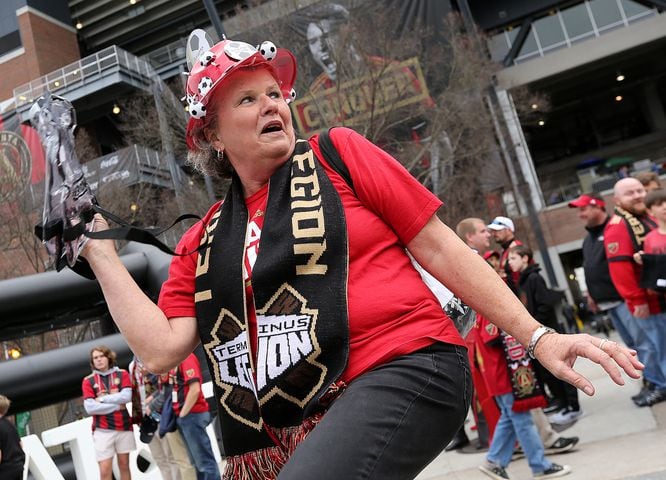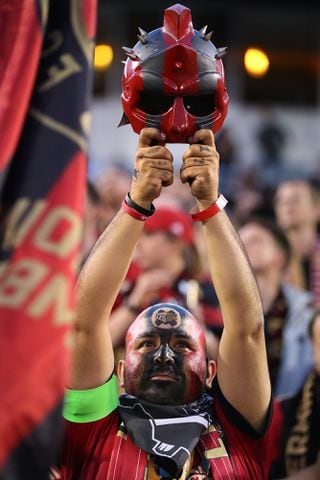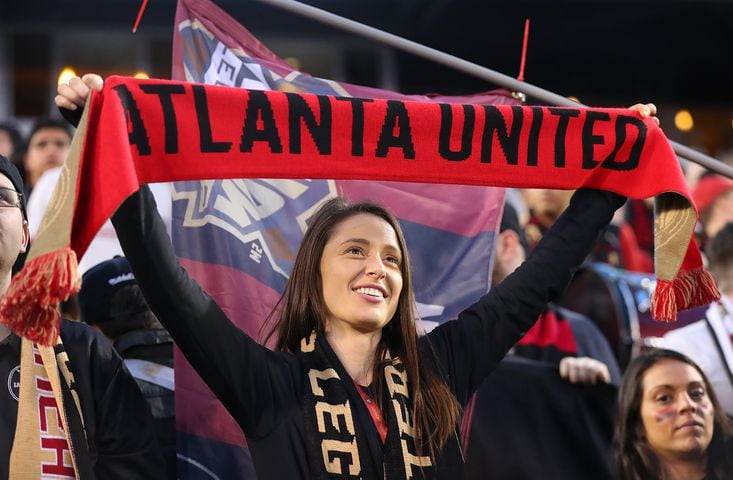I’ve been here a while. I’ve seen stuff. I covered an Atlanta franchise in team tennis, wretched Arena football and roller hockey. (Anybody remember the Fire Ants?) I saw the Beat play for the inaugural WUSA championship — and lose on penalties — in Foxborough, Mass. I missed the Flames but caught the Thrashers and even the IHL-winning Knights. None of those teams, I note, are here today.
In sum, I like to think I have a bit of standing on the matter of Passing Fancies/Bad Ideas. And here's what I'll say about the debut of Atlanta's MLS entry:
This felt like something that will be around 55 years from now. This felt totally new and absolutely right.
As has been noted a time or two, we aren’t like other major cities. We have better weather than most and worse traffic than any. (Though I can attest from eight days there that Houston is close.) We don’t have 55-year allegiances to any of our professional teams because, duh, none of them was here 55 years ago. But soccer in these United States is a bit like pro sports in the A-T-L: It hasn’t been here all that long, and it’s making its own way.
Given that Atlanta United FC made its debut in a borrowed stadium built for another brand of football more than a century ago, you can’t say the setting was ideal. But the huge crowd — for once, neither Clemson nor Georgia fans were needed to pack the house at Georgia Tech — and the utterly giddy atmosphere overrode everything. Fans were streaming onto campus three hours before kickoff. Heck, fans were tailgating! And wearing their AtlUtd shirts and brandishing their scarves.
This was Game One of Year One, but this was no novice crowd. These folks knew their soccer — it’s hard to miss on TV — and knew their chants. (They even did Iceland’s epic Viking Clap, which I consider the greatest thing ever.) They came early and stayed until the end. They were ready. So was their team.
Let the record show that, for Game One of Year One, coach Gerardo Martino – most folks call him Tata – arrayed Atlanta United in a 4-2-3-1 formation. Not to get all nerdy, but that was a bit of a departure from what Tata said he’d use on the day of his Atlanta introduction last September. Back then, he’d written “4-4-3” on a reporter’s pad. The 4-2-3-1 was the same across the back line (meaning the defense) and not altogether different up front, it being hard to tell an out-and-out striker from an attacking midfielder.
But having two holding (meaning defensive) midfielders was intriguing. It signaled that, in Game One of Year One, Martino didn’t want the visiting New York Red Bulls, who finished first in the Eastern Conference last season, to control the midfield. Strikers and attacking midfielders make the big noise, but holding midfielders are of massive importance. In Half One of Game One of Year One, Tata got his tactics right. Not for nothing did he manage Barcelona and Argentina.
By the 25th minute, AtlUtd had had 62 percent of possession. It also led 1-nil.
As first goals in franchise annals go, this was rather nice. Tyrone Mears, the right fullback from Manchester, England, lifted a lovely cross, which Yamil Asad, an attacking midfielder from San Antonio de Padua, Argentina, met at the far post and toe-poked past keeper Luis Robles. Remember Jason Heyward hoisting a home run off Carlos Zambrano on his first big-league swing? Atlanta United had scored on its first-ever shot on goal.
The lead held until the 76th minute, when United keeper Alec Kann’s fumble led to a corner that became Daniel Royer’s headed equalizer. Then, six minutes later, an adroit series of Red Bull passes left Atlanta defenders lurching. Anton Walkes’ own goal made United a 2-1 loser.
(A team owned by Arthur Blank blowing a lead? Seen it before.)
At halftime, MLS commissioner Don Garber reported that he’d arrived 10 minutes into the match — he’d come from Orlando — and said of the scene at the sold-out Bobby Dodd Stadium: “I was just speechless, and I’m not speechless very often. This is just remarkable.”
Remember the part about soccer in the USA and Atlanta sports sharing a kinship? Here was Garber: “I want our league to be the sport for the New America. A diverse city like Atlanta is the New America. We’re not the sport for the fan who likes all the other sports. We’re the sport for the young fan (meaning Millennials, not toddlers) but sees a sport and wants to paint his or her face.”
As mentioned, United and the Falcons share an owner. “Know what the overlap of season-ticket holders is for the teams?” Garber said. “Three percent.”
As of March 5, 2017, Atlanta has a new entry in its crowded marketplace, and this one isn’t like the others. This is a different sport for a different audience. This was the future — and it’s here now.
About the Author
